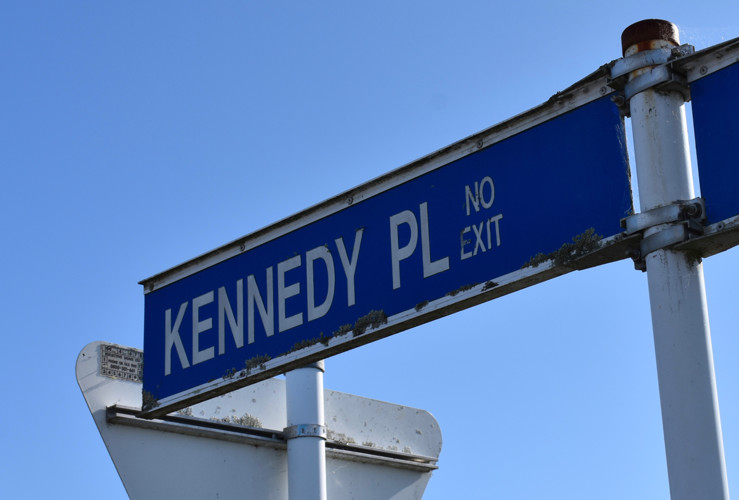 Kennedy Place sign (2020). Mike Gooch. Word on the street image collection.
Kennedy Place sign (2020). Mike Gooch. Word on the street image collection.
 Kennedy Place sign (2020). Mike Gooch. Word on the street image collection.
Kennedy Place sign (2020). Mike Gooch. Word on the street image collection.
On 10 March 1882 a small steamer hauled alongside the New Plymouth breakwater. She was the 149 ton Kennedy and was the first ship to tie up to the controversial piece of engineering. The breakwater had been under construction since September 1881 and by February 1882 had reached a length of 450 feet (137 metres) of a planned 2220 feet (677 metres).
The night before the Kennedy's arrival, men had blasted rocks in front of the breakwater to provide enough depth to allow her access. On the day, the Harbours Board adjourned its meeting and went down to Moturoa to welcome Captain Williams with his cargo of 400 casks of cement. Board member and treasurer Frederic Carrington was moved to say "I can hardly express the pleasure I feel at having at last witnessed a cherished wish of my life, namely to see a vessel moored alongside a breakwater which is to form part of the projected harbour".
The Kennedy was part of the Anchor Line of Nelson, who purchased her in 1865. She went on to serve the company for 54 years and another 10 years with the Manawatū Shipping Company before being broken up and having her hull towed to the mouth of the Wairau River to form, fittingly, part of a breakwater.
The previous year, 1928, the Kennedy had made a nostalgic voyage to New Plymouth carrying cement from Tarakohe. The locals welcomed her and the town buzzed with tales of her exploits such as strandings at Hokitika, Foxton, Greymouth and Whanganui.
It took until 1968 before the Kennedy was honoured by having her name attached to Kennedy Place, a mere 86 years after she became the first vessel to be attached to the New Plymouth breakwater.
This story was originally published in the Taranaki Daily News.
Please do not reproduce these images without permission from Puke Ariki.
Contact us for more information or you can order images online here.